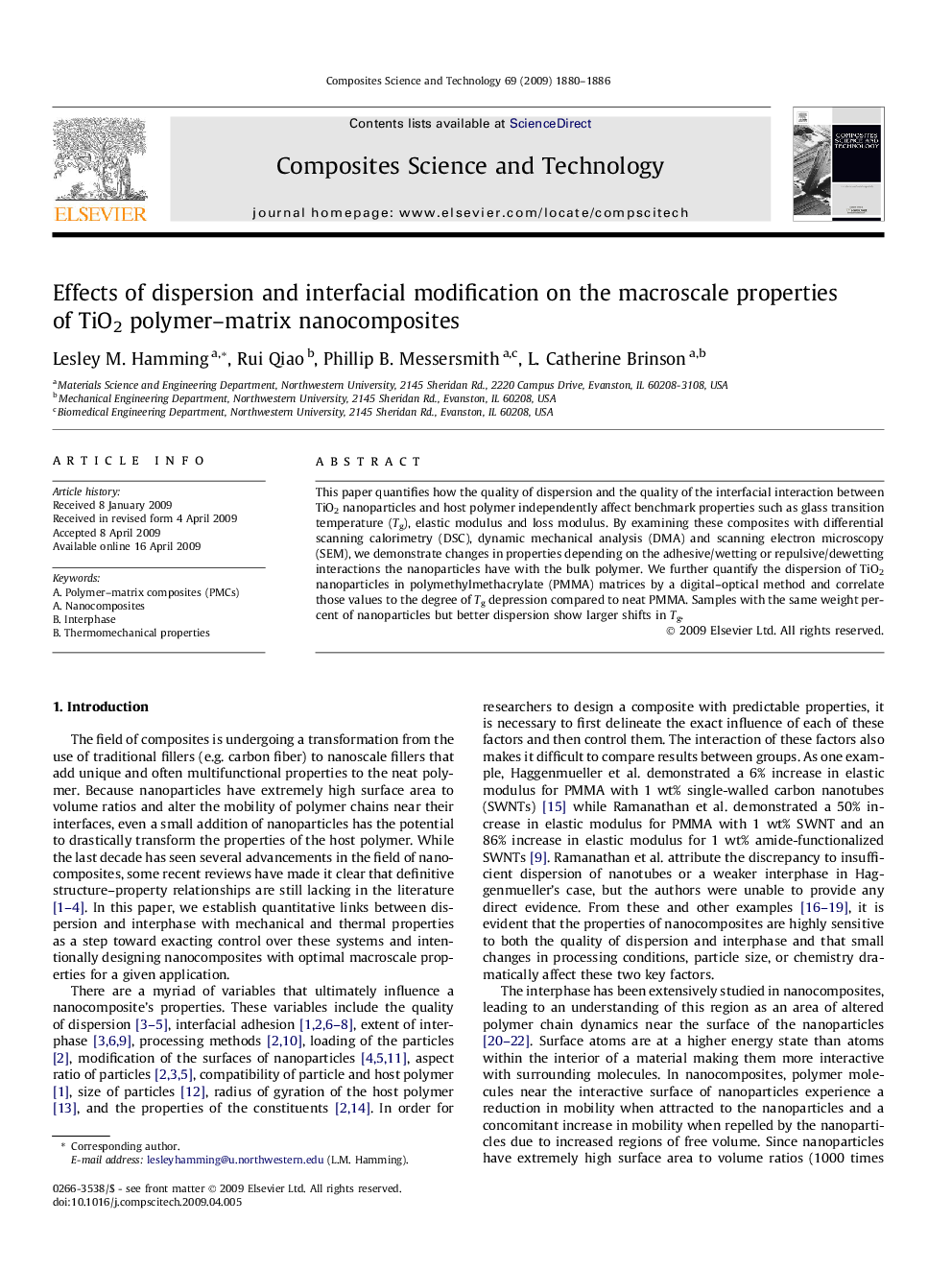| Article ID | Journal | Published Year | Pages | File Type |
|---|---|---|---|---|
| 821961 | Composites Science and Technology | 2009 | 7 Pages |
This paper quantifies how the quality of dispersion and the quality of the interfacial interaction between TiO2 nanoparticles and host polymer independently affect benchmark properties such as glass transition temperature (Tg), elastic modulus and loss modulus. By examining these composites with differential scanning calorimetry (DSC), dynamic mechanical analysis (DMA) and scanning electron microscopy (SEM), we demonstrate changes in properties depending on the adhesive/wetting or repulsive/dewetting interactions the nanoparticles have with the bulk polymer. We further quantify the dispersion of TiO2 nanoparticles in polymethylmethacrylate (PMMA) matrices by a digital–optical method and correlate those values to the degree of Tg depression compared to neat PMMA. Samples with the same weight percent of nanoparticles but better dispersion show larger shifts in Tg.
